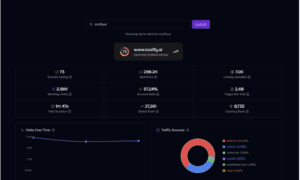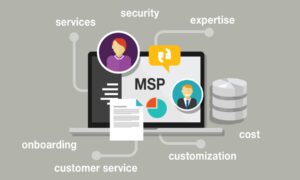Software company’s Chief Innovation Officer details the fundamentals of a strong data governance program
As the world hurtles deeper into the Artificial Intelligence Age, forward-thinking business leaders are paying more attention to their organizations’ roles and responsibilities with respect to the data on which AI relies. As a result, data governance has emerged as a pressing concern for organizations of all shapes and sizes.
The role of Chief Innovation Officer at software company Unanet affords Steve Karp a unique perspective on how data and AI intersect. Here he shares insight about why strong data governance is vital to an organization, and how to go about crafting a viable data governance culture and program.
Why all the buzz around data governance these days?
Steve Karp: IT people have long preached the importance of data management, data security and data quality as they relate to specific systems and applications used within different areas of a business. Now, with artificial intelligence being mainstreamed so quickly into virtually every facet of a business, and because AI depends on data from internal and external sources to perform its work, data becomes that much more important to an organization. And as data and AI gain importance within a business, so, too, does the organization’s ability to govern that data, whether it’s being used in the context of an AI application or otherwise.
With many organizations investing in data-management systems and AI capabilities to run more efficiently and intelligently, the sense of urgency is growing, not just within IT teams, but in the C-suite too, to ensure they maximize those investments. That in turn puts pressure on organizations to more closely curate, control and protect their data. As a result, data governance has risen to a C-level concern.
Unanet’s software is built on data management capabilities and equipped with powerful AI capabilities, so you’re well-versed in the connection between data governance and AI. Explain that connection if you would.
SK: Whether driving a piece of stand-alone software or embedded within a broader solution, AI gets its power from data — internal, external, structured, unstructured, small data sets and large. The more comprehensive, fresh, accurate, and relevant the data that is feeding an AI agent or capability, the higher-quality insight and outcomes it tends to yield. The better the insights and outcomes that AI produces, the more value it is likely to provide back to the business. From a pure bottom-line perspective, data governance has a lot to do with the time to value and return on investment that AI capabilities or an AI software solution deliver to an organization.
One thing AI is proving as we see it in action in a broader range of use cases: It doesn’t always require huge volumes of pristine data to deliver value. It can still be productive with smaller data sets that aren’t perfect from a quality standpoint.
Businesses seem all over the map when it comes to their approaches to data governance. What does a solid data governance program look like?
SK: Based on what I’ve observed internally at our company, as well as among companies in our customer base, there are different ways to create a good data governance program.
That being said, any business that uses AI — and really any organization that relies on data to a significant degree — should have a defined data governance strategy or approach, one that they publicize internally and expect their people to follow, like they would a mission statement or a manifesto. Organizationally, you need to treat it as a key element of your culture. Essentially you’re creating a data governance culture within your larger organizational culture. And shaping a data governance culture is much like shaping an organizational culture Unless you’re intentional about it, you risk it taking shape on its own, which doesn’t always yield a desirable outcome.
One big first step in shaping a data governance culture and program is to ensure you and your people understand the distinctions between data governance and data management. Data management, in my mind, is essentially how an organization internally handles data in terms of practices, processes and flow. Data governance is a more expansive concept that speaks in broad terms to the responsible stewardship, use and protection of data in all its forms and applications, considering all the stakeholders that supply, use and are touched by that data and the apps that it feeds.
Let’s dig into the nuts and bolts of data governance. Talk about some of the key elements and considerations that go into creating and sustaining a solid data governance approach.
SK: A good data governance program should accomplish a few things. It should keep data secure and ensure it’s accurate and accessible to the right people and systems. It should also ensure people across the business follow specific practices and processes around data, and keep the organization compliant. Companies are going to differ in how they go about developing and managing a program that achieves those goals. But ultimately what you want to end up with is a set of policies, procedures, best practices and guidelines that people within your organization are aware of and follow.
At the most fundamental level, you’re looking to create a data governance culture that drives certain behaviors — that encourages people to actually enter data into the systems that help your organization operate, like an enterprise resource planning (ERP) or a customer relationship management (CRM) system, for example. The culture and program should also require them to follow certain practices, business rules and procedures when they’re inputting or managing data. You also want clear standards that specify how sensitive data must be handled — what’s off limits and what isn’t; what’s subject to compliance requirements and what isn’t. And you want to encourage people to actively and consistently engage with the intelligent data-driven tools at hand, whether that’s analytics or modeling capabilities, or a generative AI virtual assistant.
Ultimately, this is about change-management and getting people to engage with data and AI in their day-to-day work. First you need to arm them with tools that empower them do their jobs better and more productively — an ERP system, for example. You want systems that are integrated so data flows freely across the business. Siloed systems and manual spreadsheets are the enemy of good data governance, and a real hinderance to an organization’s ability to leverage data and AI.
With those systems and tools in place, then it’s time to focus on training and education so people become comfortable actually using the tools. A good way to ensure they do so is with performance management, where people know they will be evaluated in part on their engagement with the tools at hand, and how closely they follow the data governance program.
Pull it all together and your organization should be in a strong position to turn the combined power of data and AI into a lasting competitive advantage.



































